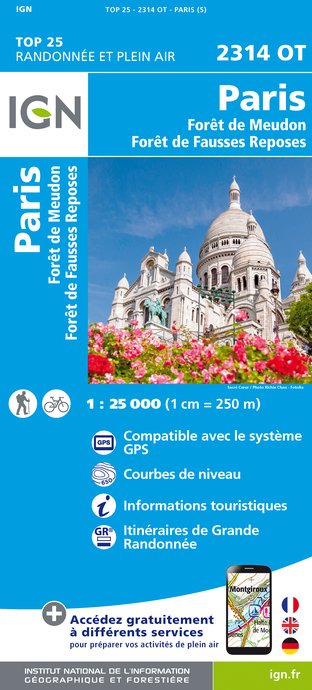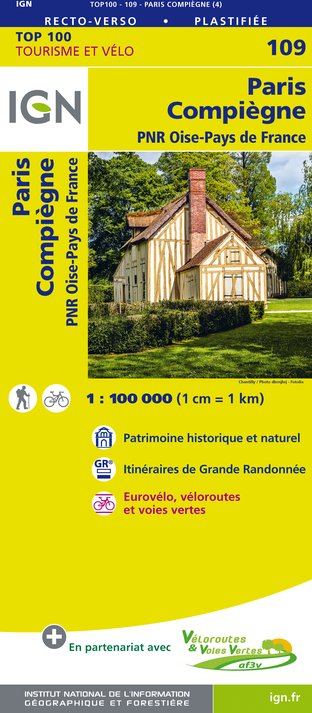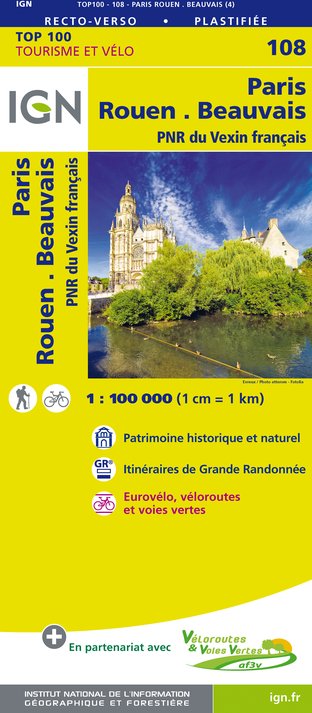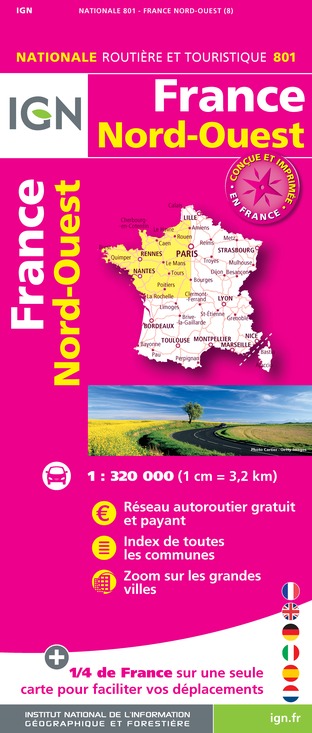Alerta
Alertas
Tipo de práctica
A pie
Presentación
Mapa
Pasos
Puntos de interés
Resumen de Cirkwi
Calificaciones y reseñas
Ver alrededor
Las Armas de París "Fluctuat nec mergitur"



Crédito : Bluebear2
El resumen de Cirkwi
Descubre París: Un viaje histórico a través de sus emblemas
Como escritor de una revista de viajes, estoy emocionado de presentarte un viaje único creado por Balades Fluviales Fabienne Lemoine Fondateur, que promete una exploración íntima del rico patrimonio de París a través de sus emblemáticos emblemas y blasones. Este viaje no se trata solo de seguir pasos; se trata de descubrir la esencia del espíritu indomable de París, anclado en su famoso lema "Fluctuat nec mergitur". A medida que nos adentremos en los pintorescos paisajes y maravillas arquitectónicas que han resistido la prueba del tiempo, descubriremos una narrativa de resiliencia, prestigio y honor inquebrantable que encapsula el motivo de la ciudad. Únete a nosotros para experimentar una visión diferente de París, alejada de los caminos turísticos más trillados.
Un viaje de particularidades distintivas
Este itinerario meticulosamente diseñado por Balades Fluviales Fabienne Lemoine Fondateur abarca aproximadamente 12.92 km, desplazándose desde alturas de 63 metros hasta mínimos de 27 metros, con una variación de elevación menor que indica una caminata relativamente fácil que la mayoría encontraría manejable. El diseño cuidadoso asegura un flujo sin problemas de un hito a otro sin esfuerzo innecesario. Los cambios de elevación positivos esperados fluctúan entre 109 y 107 metros, indicando una pendiente suave adecuada para participantes de todas las edades, lo que lo convierte en un viaje técnicamente accesible a través del corazón histórico de París.
Consejos estacionales para los exploradores de París
Cada temporada en París ofrece un telón de fondo único para este emblemático viaje. En primavera, la ciudad florece, proporcionando un escenario pintoresco ideal para explorar. El verano trae días más largos, pero también multitudes más grandes; se recomiendan visitas tempranas por la mañana o al atardecer. El otoño pinta la ciudad con tonos cálidos, perfectos para paseos tranquilos, mientras que el invierno, aunque más frío, a menudo ofrece días más despejados. Independientemente de la temporada, es imprescindible llevar zapatos cómodos para caminar y siempre estar preparado para las lluvias impredecibles de la ciudad con un paraguas o un impermeable para garantizar una exploración agradable e ininterrumpida.
El corazón de la historia y la cultura francesas
París, en su esencia, no es solo la capital de Francia, sino el núcleo de su evolución histórica y cultural, profundamente entrelazado con la identidad de la nación. La ciudad, históricamente un centro de estudios, artistas y revolucionarios, cuenta con un legado que abarca siglos. Los blasones y emblemas que encuentres encapsulan historias de resiliencia, revolución y renacimiento que han dado forma no solo a la ciudad, sino también a la nación. A medida que recorremos esta ruta, no solo estamos presenciando maravillas arquitectónicas, sino que nos estamos adentrando en una narrativa viva y respirante de ingenio humano y espíritu que continúa influyendo en el mundo.
Información climática para el aventurero parisino
El clima de París es predominantemente oceánico, marcado por inviernos suaves y veranos agradables, lo que lo convierte en un destino durante todo el año. Sin embargo, la mejor época para emprender este viaje emblemático sería durante la primavera (marzo a mayo) o el otoño (septiembre a noviembre). Estos períodos suelen tener temperaturas suaves y menos turistas, lo que proporciona una experiencia más relajada del rico tapiz de historia y cultura de la ciudad. Siempre revisa el pronóstico del tiempo antes de tu viaje, ya que París es conocido por sus lluvias inesperadas, independientemente de la temporada.
Como escritor de una revista de viajes, estoy emocionado de presentarte un viaje único creado por Balades Fluviales Fabienne Lemoine Fondateur, que promete una exploración íntima del rico patrimonio de París a través de sus emblemáticos emblemas y blasones. Este viaje no se trata solo de seguir pasos; se trata de descubrir la esencia del espíritu indomable de París, anclado en su famoso lema "Fluctuat nec mergitur". A medida que nos adentremos en los pintorescos paisajes y maravillas arquitectónicas que han resistido la prueba del tiempo, descubriremos una narrativa de resiliencia, prestigio y honor inquebrantable que encapsula el motivo de la ciudad. Únete a nosotros para experimentar una visión diferente de París, alejada de los caminos turísticos más trillados.
Un viaje de particularidades distintivas
Este itinerario meticulosamente diseñado por Balades Fluviales Fabienne Lemoine Fondateur abarca aproximadamente 12.92 km, desplazándose desde alturas de 63 metros hasta mínimos de 27 metros, con una variación de elevación menor que indica una caminata relativamente fácil que la mayoría encontraría manejable. El diseño cuidadoso asegura un flujo sin problemas de un hito a otro sin esfuerzo innecesario. Los cambios de elevación positivos esperados fluctúan entre 109 y 107 metros, indicando una pendiente suave adecuada para participantes de todas las edades, lo que lo convierte en un viaje técnicamente accesible a través del corazón histórico de París.
Consejos estacionales para los exploradores de París
Cada temporada en París ofrece un telón de fondo único para este emblemático viaje. En primavera, la ciudad florece, proporcionando un escenario pintoresco ideal para explorar. El verano trae días más largos, pero también multitudes más grandes; se recomiendan visitas tempranas por la mañana o al atardecer. El otoño pinta la ciudad con tonos cálidos, perfectos para paseos tranquilos, mientras que el invierno, aunque más frío, a menudo ofrece días más despejados. Independientemente de la temporada, es imprescindible llevar zapatos cómodos para caminar y siempre estar preparado para las lluvias impredecibles de la ciudad con un paraguas o un impermeable para garantizar una exploración agradable e ininterrumpida.
El corazón de la historia y la cultura francesas
París, en su esencia, no es solo la capital de Francia, sino el núcleo de su evolución histórica y cultural, profundamente entrelazado con la identidad de la nación. La ciudad, históricamente un centro de estudios, artistas y revolucionarios, cuenta con un legado que abarca siglos. Los blasones y emblemas que encuentres encapsulan historias de resiliencia, revolución y renacimiento que han dado forma no solo a la ciudad, sino también a la nación. A medida que recorremos esta ruta, no solo estamos presenciando maravillas arquitectónicas, sino que nos estamos adentrando en una narrativa viva y respirante de ingenio humano y espíritu que continúa influyendo en el mundo.
Información climática para el aventurero parisino
El clima de París es predominantemente oceánico, marcado por inviernos suaves y veranos agradables, lo que lo convierte en un destino durante todo el año. Sin embargo, la mejor época para emprender este viaje emblemático sería durante la primavera (marzo a mayo) o el otoño (septiembre a noviembre). Estos períodos suelen tener temperaturas suaves y menos turistas, lo que proporciona una experiencia más relajada del rico tapiz de historia y cultura de la ciudad. Siempre revisa el pronóstico del tiempo antes de tu viaje, ya que París es conocido por sus lluvias inesperadas, independientemente de la temporada.
Generado automáticamente.
IGN tarjetas

2314OT - PARIS FORÊT DE MEUDON FORÊT DE FAUSSES REPOSES
Editora : IGN
Recopilación : TOP 25 ET SÉRIE BLEUE
Escalera : 1:25 000
13.90€

119 PARIS SENS PNR DU GÂTINAIS FRANÇAIS
Editora : IGN
Recopilación : TOP 100
Escalera : 1:100 000
8.40€

190 PARIS CHANTILLY FONTAINEBLEAU
Editora : IGN
Recopilación : TOP 100
Escalera : 1:100 000
8.40€

118 PARIS CHARTRES PNR DE LA HAUTE VALLÉE DE CHEVREUSE
Editora : IGN
Recopilación : TOP 100
Escalera : 1:100 000
8.40€

109 PARIS COMPIÈGNE PNR OISE-PAYS DE FRANCE
Editora : IGN
Recopilación : TOP 100
Escalera : 1:100 000
8.40€

108 PARIS ROUEN BEAUVAIS PNR DU VEXIN FRANÇAIS
Editora : IGN
Recopilación : TOP 100
Escalera : 1:100 000
8.40€

D75-95 ÎLE-DE-FRANCE OUEST
Editora : IGN
Recopilación : CARTES DÉPARTEMENTALES IGN
Escalera : 1:150 000
5.90€

D77 SEINE-ET-MARNE
Editora : IGN
Recopilación : CARTES DÉPARTEMENTALES IGN
Escalera : 1:150 000
5.90€

NR08 CENTRE-VAL DE LOIRE
Editora : IGN
Recopilación : CARTES RÉGIONALES IGN
Escalera : 1:250 000
6.80€

NR03 ÍLE DE FRANCE
Editora : IGN
Recopilación : CARTES RÉGIONALES IGN
Escalera : 1:250 000
6.80€

NR01 HAUTS-DE-FRANCE
Editora : IGN
Recopilación : CARTES RÉGIONALES IGN
Escalera : 1:250 000
6.80€

801 FRANCE NORD OUEST
Editora : IGN
Recopilación : CARTES NATIONALES IGN
Escalera : 1:320 000
6.10€

EUROPE
Editora : IGN
Recopilación : DÉCOUVERTE DES PAYS DU MONDE IGN
Escalera : 1:2 500 000
7.00€
Informaciónes técnicas
A pie
Dificultad
No especificada
Dist.
13 km
Tipo de práctica
A pie
Mostrar más
Perfil altimétrico
Punto de partida
75004
Paris
Lat : 48.856414Lng : 2.3517394
Pasos
Puntos de interés
Autor de los datos
Calificaciones y reseñas
Para ver alrededor










